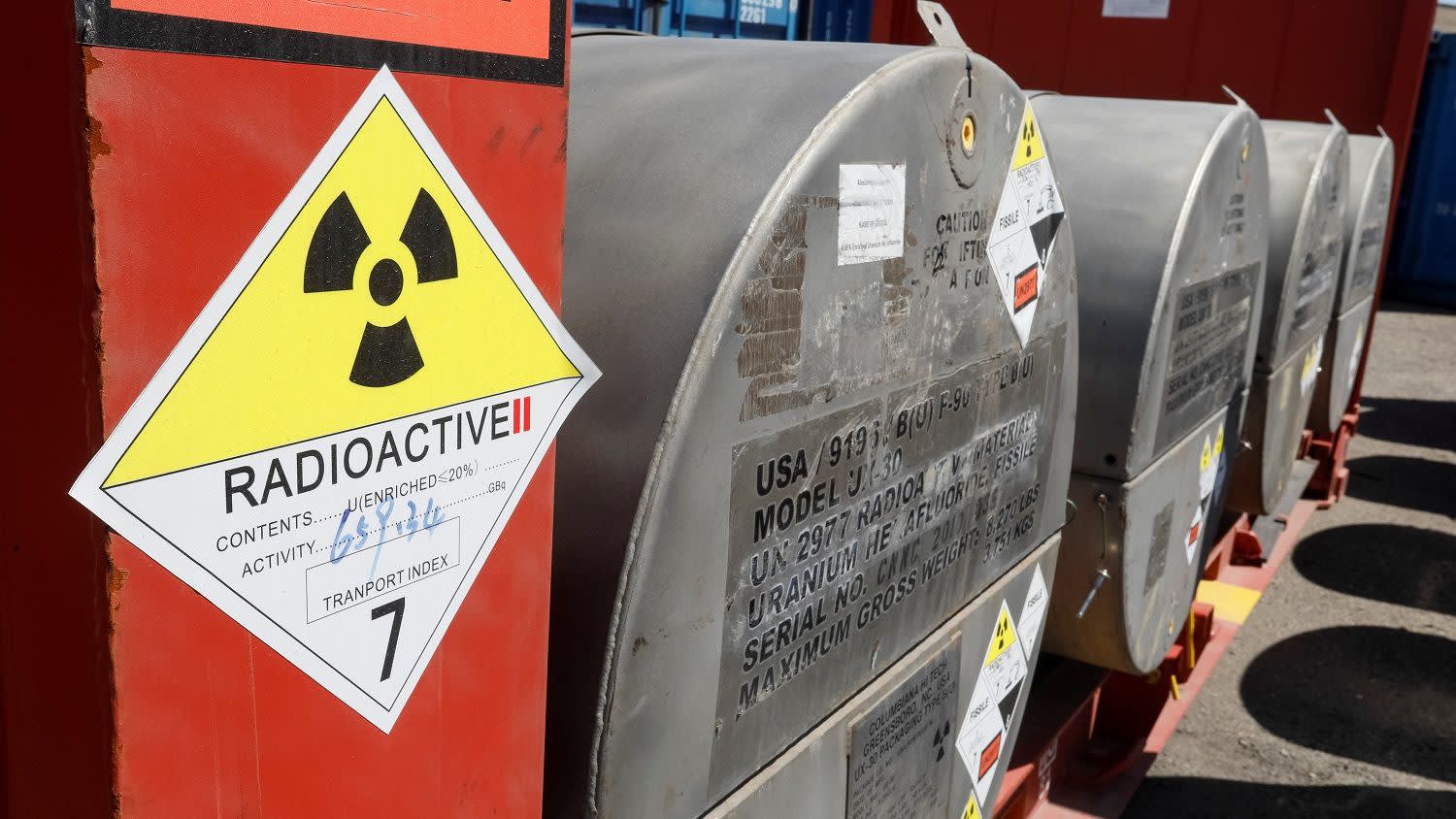
One critical aspect of any denuclearization of the DPRK involves dismantlement of its nuclear facilities and management of their associated radioactive wastes. Such issues were already discussed in 2005 by two scholars: Professor Whang Jooho (Kyung-Hee University Seoul, Republic of Korea) and Dr. George T. Baldwin affiliated to the Sandia National Laboratories (Albuquerque, USA). This report will update and complete information gathered and analyzed by the two previously mentioned scholars. In spite of the multiple declarations of the North Korean Foreign Minister Ri Yong-ho notifying the Chinese authorities that Pyongyang’s commitment to denuclearization remains unchanged ‑ the confidence on the North Korean government is still very low. For instance, starting from 2017 the North Korean authorities expanded several major missile bases such as the Sino Village Missile Operating Base (Sino Village, Onjon County, North Pyongyan Province), or the Sakkanmol missile base (Hwangju county, North Hwanghae Province).
The purposes of this article are triple. First provide a historical approach concerning the development of Nuclear weapons. Secondly, discuss North Korean nuclear waste, and finally discussing why the North Korean government will not stop over its nuclear program.
Global historical facts
According to the CTBTO, Nuclear weapons tests were done – some successful, others not – in all environments since 1945: in the atmosphere, underground and underwater. Tests have been carried on different fields such as out onboard barges, on top of towers, suspended from balloons, on the Earth’s surface, more than 600 meters underwater and over 200 metres underground. Nuclear test bombs have also been dropped by aircraft and fired by rockets up to 320 km into the atmosphere. We may categorize nuclear tests in four categories: atmospheric test; underground test; underwater test, and upper atmospheric test.
From a chronological perspective, the first nuclear test was carried out by the United States in July 1945, followed by the Soviet Union in 1949, the United Kingdom in 1952, France in 1960, and China in 1964. The National Resources Defense Council estimated the total yield of all nuclear tests conducted between 1945 and 1980 at 510 megatons (Mt). Atmospheric tests alone accounted for 428 mt, equivalent to 83% of all nuclear tests or to over 29,000 Hiroshima size bombs.
The amount of radioactivity generated by a nuclear explosion can vary considerably depending upon a number of factors. These include the size of the weapon and the location of the burst. An explosion at ground level may be expected to generate more dust and other radioactive particulate matters than an air burst. The dispersion of radioactive material is also dependent upon weather conditions‑ . Radioactive dust 5 could escape through holes or cracks in the mountain, where the nuclear activity was generated. Any cracks may appear with the last tests of 2017, as until 2017, the mountain’s surface had shown no visible damage after four underground nuclear tests before 2016.
Key historical facts concerning the DPRK’s nuclear programme
Two development phases are to be distinguished in the DPRK´s nuclear programme history. The first started at the end of the fifties and 6 was set up with Soviet assistance.
• In march 1953, DPRK authorities signed a Peaceful Utilization Agreement with the Soviet Union. • In 1956, some DPRK scholars were sent to the Soviet Union where they trained at the Joint Institute for Nuclear Research of the city of Dubna (Moscow region).
• In 1962, the Yongbyon Nuclear Scientific Research Center started to be erected. In June 1963, the 2 MW(e) small-scale research reactor IRT-2000 was introduced by the Soviet Union. The second phase started in 1974 with the expansion of the previous reactor to 5 MW(e) natural uranium, graphite moderated reactor in Yongbyon. In the same period an ore processing plant and a fuel rod fabrication plant were built.
• On 12 December 1985 the DPRK became a party to the NPT. On 10 April 1992 the NPT Safeguards Agreement entered into force (INFCIRC/403). Before that, in 1977, the country had concluded an INFCIRC/66 type Safeguards Agreement (INFCIRC/252) for two nuclear research facilities (the IRT research reactor and a critical assembly). The management of nuclear waste can be done through different channels. The first one is the trade of nuclear waste. The second one is called decommissioning.
•In 1986, the 5 MW(e) reactor became operational.
• In 1987 started the construction of the first of two larger gas-graphite reactors and the construction of a Radiochemical Laboratory with a sizeable reprocessing capacity started. The initial reactor was expanded to 8 MW(e).
• After the DPRK had submitted its initial report to the IAEA under its Safeguards Agreement in May 1992, inspections began. Shortly thereafter inconsistencies emerged between the DPRK’s initial declaration and the Agency´s findings, centring on a mismatch between declared plutonium product and nuclear waste solutions and the results of the Agency´s analysis. The latter suggested that there existed in the DPRK undeclared plutonium. • DPRK Nuclear wastes sites were denied access to IAEA officials in February 1993.
• In 1994 the IAEA was permitted by the DPRK to conduct safeguards activities with a limited scope only.
• On 13 June 1994, the DPRK, which had been an IAEA Member State since 1974, withdrew from its membership in the Agency. Although the withdrawal did not affect the DPRK obligations under its Safeguards Agreement, which in the Agency´s view remains binding and in force, the DPRK took the position that it was in a special position with regard to the Safeguards Agreement and that it was no longer obliged to allow the inspectors to carry out their work under the Safeguards Agreement.
• In June 1994, President Jimmy Carter met with North Korean President Kim Il Sung in June, initiating the negotiations that produced the U.S.-North Korea Agreed Framework on nuclear safeguards in August 1994. Unfortunately, Kim Il Sung passed away in July 1994 and the agreement was cancelled in 2002.
• On the 11 January 2003, North Korea announced its withdrawal from the NPT.
• In April 2009, the DPRK authorities stated that it would build an LWR.
• In June 2007, a visit of an IAEA delegation to the DPRK took place for talks on verification and monitoring the shutdown of the Yongbyon Nuclear Scientific Research Center.
• In 2010, some Americans were allowed to visit North Korea’s new LWR.
• On 2 April 2013, the General Department of Atomic Energy of the DPRK (조선 민주주의 인민 공화국 원자력 총국) announced that the DPRK would take measures for “readjusting and restarting all the nuclear facilities in Yongbyon.
• As of June 2013, major external work on the LWR appeared to have been completed.
• Since the DPRK has continued to stress the importance of its nuclear weapons programme.
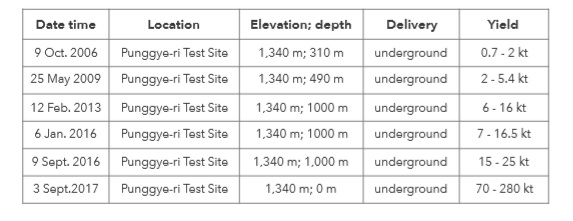
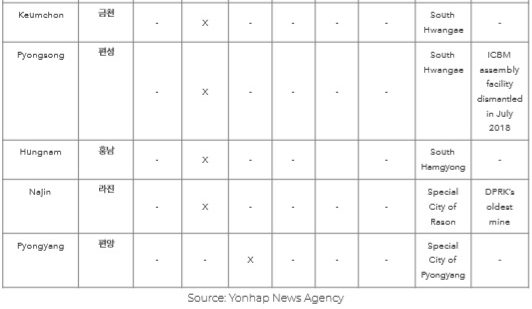
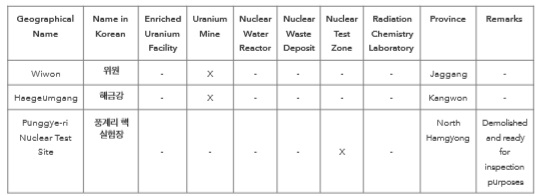
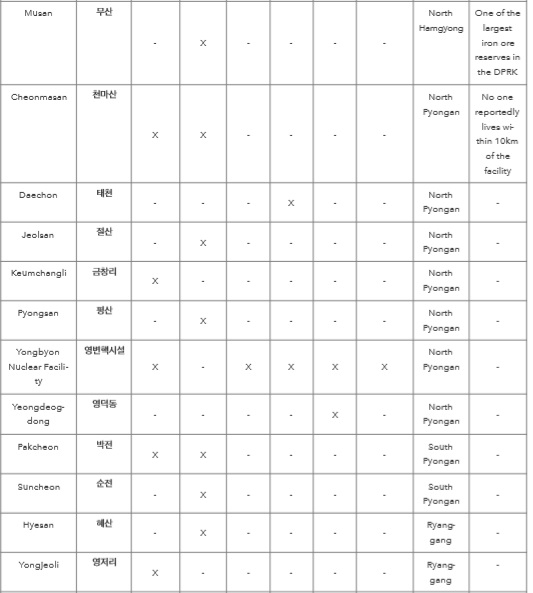

Table 2. Status of Nuclear Facilities in the DPRK

List of radioactive materials
Due to historic activities typically related to radium industry, uranium mining, and military programs, numerous sites contain or are contaminated with radioactivity. Radioactive dangers come from the following elements: Pu-239‑ is the primary fissile material used in nuclear bombs, plus some material with much higher specific activities, such as Cesium, Iodine, and Plutonium. has been released into the atmosphere, soil and water. The impacts of such isotopes depend on their uptake in the environment and in the human body, the type of radiation emitted, the quantity of isotopes, and their half-life and degree of radioactivity.

These radioactive isotopes are released during nuclear tests, and led a major impact on the environment and irradiation of the human body; these isotopes were predominantly found in most of the nuclear test sites worldwide. Such verifications couldn’t be verified on the territory of the DPRK. Since approximately two thirds of the Globe’s surface is covered by water, a significant share of these radionuclides has been transferred into the marine environment, as in the cases of radionuclides 137Cs and 90Sr, with negative consequences being primarily related to the bioaccumulation through food chain cycles. We can deduce that 10 some DPRK seafood was contamined by the DPRK nuclear tests. The Punggye-ri Nuclear Test Site is localized 50 kms from the Sea of Japan. For safety reasons, there should be an exclusion zones of 30-50 km around the former destroyed Nuclear Test Site.
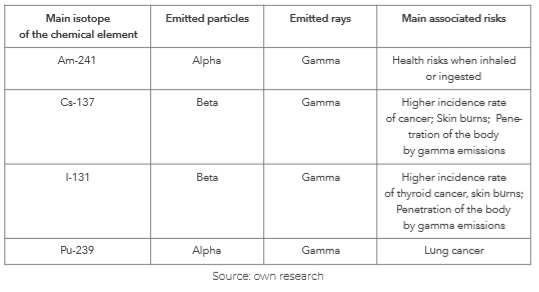
In the case of the DPRK, there are some quantities of contaminated soil and water over a distance of 100 kilometers within the Punggye-ri Nuclear Test Site. According to some sources, About 80 percent of trees that are planted die at the area of the Punggye-ri Nuclear Test Site. I would underestimate these defectors’ assessments unless they had some technical skills to provide such assumptions. However, these assumptions can be verified through testimonials of North Korean nuclear scientist who defected recently from North Korea. The management of DPRK nuclear waste can be also discussed with DPRK scientists who defected during the Weasel operation such as Kyong Won-ha, a junior nuclear scientist, who defected during this operation and worked later at the Los Alamos Nuclear Research Center in the USA. Another important testimony may come from senior KPA officials who defected either to South Korea or to the USA.
DPRK nuclear waste
This report aims also to analyze consequences of latest nuclear weapons tests conducted by North Korea, highlighting the impact of radioactive pollution on the atmospheric, aquatic, and underground environments. Special attention was given to the concentration of main radioactive isotopes which were released, such as 241Am, 14C, 137Cs, 131I, 210Po, 238Pu, 239Pu, 240Pu, and 90Sr, generally stored in the atmosphere and marine environment. The quantity of nuclear waste emitted after each nuclear test is difficult to be estimated.
Nuclear wastes are a subject of cooperation between the DPRK and Taiwan. In the late 90’s one Italian businessman named Giorgio Comerio‑ was accused having organized the dumping in 1995 of 200 000 bar 14 rels of DPRK nuclear waste into the sea near Taiwan. In the past, 15 Giorgio Comerio tried to export DPRK nuclear wastes to African countries and more precisely to water exclusive zone through his company Oceanic Disposal Management.
In 1996 the DPRK authorities signed a deal with Taiwan to dispose of its nuclear waste from atomic power plants. South Korean authorities and Taiwanese public organizations reacted furiously to the deal and Taiwan was eventually forced to back down and cancel the agreement. A similar agreement was supposed to be signed in 2001.
Taiwan nuclear wastes were supposed to be send to closed DPRK coal mines. The close relation between the DPRK and Taiwan is due to the fact that Taiwan is not a member of the United Nations. Therefore, fields of cooperation are wider and applied sanctions toward the DPRK does not apply to their bilateral relations until September 2017. Starting from September 2017 Taiwan has banned all trade activities with North Korea to comply with the United Nations Security Council Resolution 2375 adopted on the 11 September 2017.
There is a risk of Nuclear exposure after North Korean nuclear tests. As of now so far there are no abnormal increase of radioactivity levels. Nevertheless, it’s requested to continue to monitor the surrounding region with a large amount of highly sensitive equipment and analyse the data in state-of-the-art laboratories.
For this purpose, the North Korean government shall allow scientists to evaluate and secure the site. Another site to be inspected is the Yongbyon Nuclear Scientific Research Center, which is still functioning in North Korea, but it didn’t participated to the last nuclear tests.
The Yongbyon area is considered as a sensitive one. The IAEA inspectors were refused permission to inspect two sites at the Yongbyon facility that inspectors had visited briefly in September 1992 and that were believed, reportedly on the basis of satellite photos provided by U.S. intelligence, to contain reprocessing waste not declared by the DPRK. The DPRK denied that the sites contained nuclear waste and refused to permit inspection of the facilities on the grounds that they were military sites not related to the nuclear program. Furthermore, IAEA inspectors 19 noticed that the Spent fuel is processed in batch mode in two process lines of the main reprocessing facility of the Yongbyon Nuclear Scientific Research Center did not contain any nuclear waste reduction facility. This latest issue is related to the nuclear decommissioning which is the process whereby a nuclear facility is dismantled to the point that it no longer requires measures for radiation protection. Finally in 1999, US authorities made a concession, and financed the management of hundreds of DPRK nuclear waste through the company NAC International. Further DPRK nuclear waste (8.000 spent fuel elements) were hypothetically managed by DPRK authorities in the first half-year of 2003.
Unfortunately, according to Satellite images as of 2017 North Korea has failed to dispose safely of nuclear waste‑ . Evidence suggests that North Korea stores its high-level nuclear waste (HLW) in liquid form in tanks on the same site where it is made, and has not invested in infrastructure to reduce, denitrify, or vitrify this waste. Evidence suggests that North Korea stores its HLW in liquid form in tanks on the same site where it is made, and has not invested in infrastructure to reduce, denitrify, or vitrify this waste. No information is available concerning the decommisionning process of the Punggye-ri Test Site.
Technical risks associated to dprk nuclear tests
According to Remus Prăvălie, a researcher at the Faculty of Geography of the University of Bucharest, DPRK nuclear tests are responsible for the current environmental contamination with radioactive waste which resulted in ecologically and socially destroyed sites, due to high levels of radioactivity. The danger presented by a radioactive substance is often rated through an indicator called “potential radioactive toxicity” or radiotoxicity. This radiotoxicity concerns internal expositions, external expositions. Internal expositions is associated to the work realized through nuclear facilities of the DPRK. External expositions are related to geographical zones where nuclear tests were realized. Their radiotoxicity is emitted through the emission of short range alpha particles.
Risks associated to the considered DPRK population are hard to be quantified as the ingestion or inhalation of a radioactive element results in a so-called committed dose, because its effects are oncoming and would be spread over long periods of time, may be up to our whole lifetime. One must take into account how radioactive materials are eliminated, how they are fixed by our body, the type of radiation and the radioactive decay half-life. Some kind of risks are also associated to the Chinese geographical side. For instance, there is an increasing the risk of eruption of the Changbai Mountain (⻓长⽩白⼭山,백두산),” a large, active volcano at China-Korean border.
Findings
Findings can be summarized as follow:
• As of February 2019, the DPRK has neither abandoned its existing nuclear programme according to CVID procedures, nor ceased all related activities. As of September 2018, activities were observed near the Kuryong River‑ close to the Yongbyon Nuclear Scientific Research Center.
• It must be underlined that the dismantlement of the Yongbyon Nuclear Scientific Research Center would still leave the DPRK with a nuclear weapons stockpile and the technical ability to produce weapons based on the production of HEU elsewhere. But it would definitely means that the DPRK won’t be able to produce plutonium and HEU.
• As of March 2018, it has been determined that the reactor of the Yongbyon Nuclear Scientific Research Center is operating again, as the evidence suggests, it means North Korea has resumed production of plutonium presumably for its nuclear weapons program and therefore, resumed the production of nuclear waste.
• As of December 2018, DPRK authorities presented no goal of cleaning all presently contaminated sites successfully by 2025. Geomelting technology may be used. A first step is the closure of the nuclear sites. Next step is cleaning, through for instance geomelting technology.
• The whole process is a consuming-time issue. In comparison, the verification of South Africa’s dismantlement by the IAEA was complicated by lack of knowledge of the nuclear weapons program infrastructure, and took approximately two years. When the US authorities proceeded to the dismantlement of some of their plutonium recovery facilities, the whole process required years of work and hundreds of millions of dollars.
• The states’ responsibilities of the DPRK for ensuring the safety and security of their populations in the event of a nuclear test or explosion is fundamental. Furthermore, a radioactive waste treatment facility would cost hundreds of milion of dollars.
• In a two- and-a-half-year period from 1959, over 61,000 teeth were not only collected but also analysed in the US to assess the accumulation of strontium-90 in children. A such research may be applied through 30 collection of teeths of people who defected to South Korea. Interestingly, the Hanawon Center has a fully equipped stomatology treatment room. Another element would help researchers. A collection of samples of soil, water or leaves coming from the region of Punggye-ri can be analyzed in order to check their radioactivity degree. These soil samples can be collected by tourists or any foreigners travelling to the DPRK for private or business purposes. Then the main issue is the ability of DPRK customs to check foreigners ownings when leaving the DPRK.
• More conferences on the humanitarian impacts of nuclear weapons shall be held in order to increase the society conscious. In March 2013, Norway hosted the first international conference on the humanitarian impacts of nuclear weapons. Two followed in Nayarit (Mexico), and Vienna.
• Inspections in the DPRK shall be done by CBCTO, the IAEA or representatives from the P-5 nuclear weapon. Zhao Guodong, a government nuclear waste confinement specialist at the University of South China, said the North Korean government should allow scientists from China and other countries to enter the test site and evaluate the damage. Unfortunately as of now, there are no IAEA safeguards nuclear facilities following the DPRK decision to cease all cooperation with the IAEA in April 2009. In June 2018, the The IAEA management informed about its willingness to resume nuclear verification activities in North Korea ‑ if political agreement makes this possible.
• Chinese autorities are also monitoring the DPRK nuclear situation through a technical cooperation which is barely mentioned in media. For instance, Lee Doh-sik, the director of the Geological Research Institute at the State Academy of Sciences and formally top North Korean geologist, visited the Institute of Earth Science at the Chinese Academy of Sciences in Beijing, two weeks after the 2017. In 2002 IAEA directions proposed to invite a DPRK nuclear team to Vienna. The proposal was officialy refused. As of 2019, IEAE specialists monitor the development of the DPRK nuclear programme mainly through satellite imagery.‑
• The majority of DPRK nuclear facilities are localized in the North Pyongan Province.
Publikacja powstała dzięki wsparciu finansowemu Centrum Studiów Polska-Azja.
This material can be found in Quarterly Boym – No. 1/2019
Przypisy:
Przypisy dostępne są w pliku PDF.

Nicolas Levi Analyst on North and South Korea. He is an assistant professor at the Institute of Mediterranean and Oriental Cultures of the Polish Academy of Sciences. Author of 7 books, more than 20 academic articles, and over 50 analytical reports on the Korean Peninsula, Poland, and related issues. He conducts lectures at top universities in Poland and abroad.
czytaj więcej
“May you be the mother of a thousand sons” – the status of women in Indian society
The 1950 Indian Constitution introduced the principle of equal opportunities for gender equality, which grants women and men the same rights in family life, political, social and economic life. So why is it that nearly forty per cent of girls aged 15-17 do not attend school, the custom of dowry giving is still cultivated and prenatal sex selection is still a huge social problem?
Magdalena RybczyńskaKyrgyzstan on the Path to Political Stabilisation
On 10 January, early presidential elections were held in Kyrgyzstan, following the resignation of the incumbent, President Zheenbekov. The atmosphere in which the vote was conducted remained tense. This had been the case since the results of the October elections were announced, in which the opposition grouping failed to win a single parliamentary seat.
Jerzy OlędzkiRisk and oppportunities for self-driving vehicles. Exploring global regulations and security challenges in the future of connected vehicles. The report was co-produced by Boym Institute and 9DASHLINE.
Are Polish Universities Really Victims of a Chinese Influence Campaign?
The Chinese Influence Campaign can allegedly play a dangerous role at certain Central European universities, as stated in the article ‘Countering China’s Influence Campaigns at European Universities’, (...) However, the text does ignore Poland, the country with the largest number of universities and students in the region. And we argue, the situation is much more complex.
Patrycja PendrakowskaWhy is stronger foreign investment protection needed in relations with China?
One of the key elements of the protection of foreign investment (and thus the foreign investor) is the mechanism for resolving disputes between the state and the foreign investor. The mechanism itself may take different forms...
Adrian ZwolińskiNew Female Prime Minister Faces Thailand’s Political Turmoil
Thailand, known for military coups, political downfalls, and dashed democratic hopes, has a new Prime Minister. Paetongtarn Shinawatra is not only the youngest elected Prime Minister in the country's history and the second woman to hold this post, but she is also a member of the Shinawatra political dynasty.
Andżelika SerwatkaLiquidation of the Polish colony in Manchuria (north-eastern China)
Ms. Łucja Drabczak - A Polish woman born in Harbin, she spent her childhood in China. She returned to Poland at the age of 10. She is the author of the book 'China... Memories from my childhood'. She contacted us to convey special family memories related to leaving Manchuria in 1949.
San Zhong Zhanfa or Three Warfares. Chinese Hybrid Warfare
Cognitive operations are becoming an increasingly significant and common element of non-kinetic military operations. States and other political players deliberately manipulate the way their actions, those of their allies and those of their adversaries are perceived by the governments and societies of other international players.
Paweł BehrendtOn conflict in the Middle East: Malik Dahlan’s Letter to President Isaac Herzog
This letter has been included into our Voices From Asia series, as we consider it a significant addition to the ongoing discussion surrounding the ongoing conflict in the Middle East.
Malik DahlanPatrycja Pendrakowska and Paweł Behrendt on navigating Sino-Polish relations
We are proud to annouce, that Patrycja Pendrakowska and Paweł Behrendt made a contribution to the latest project of the Baltic Security Foundation, The Jamestown Foundation and the Baltic-American Freedom Foundation.
Guidance for Workplaces on Preparing for Coronavirus Spread
Due to the spread of coronavirus, the following workplace recommendations have been issued by the Ministry of Development, in cooperation with the Chief Sanitary Inspector. We also invite you to read article about general information and recommendations for entrepreneurs.
We would like to inform, that Observer Research Foundation has published article of Krzysztof Zalewski - the Boym Institute Analyst, Chairman of the Board and Editor of the “Tydzień w Azji” weekly.
Krzysztof ZalewskiInterview with Uki Maroshek-Klarman on “Betzavta” method
Interview with Uki Maroshek-Klarman - Academic Director of the Adam Institute for Democracy and Peace in Israel. Founder of "Betzavta" method, which was created with intention of streghtening people's participation in society and making conflicts easier to solve.
Patrycja PendrakowskaPatrycja Pendrakowska as a participant of Women Economic Forum (WEF) in India
The interactive discussion covers recent projects and collaborations which have contributed to a greener economy in India
Adam Institute for Democracy & Peace – Crowdfunding Campaign December 2020
Democracy in Israel is in crisis. And if we don't educate for democracy, it just won't exist. It's that simple. The actual teaching of democracy, on the other hand, isn't so simple. It requires experience, theoretical and practical knowledge and the flexibility to adapt to our ever-changing reality.
Environmental problems transcend not only national borders but also historical periods. And yet debates on the necessary measures and timelines are often constrained by considerations of election cycles (or dynastic successions) in any given country.
Dawid JuraszekWorkshop – Liberalism vs authoritarianism: political ideas in Singapore and China
We cordially invite you to a workshop session “Liberalism vs authoritarianism: political ideas in Singapore and China”. The workshop is organized by Patrycja Pendrakowska and Maria Kądzielska at the Department of Philosophy, University of Warsaw on ZOOM.
Europe and the Consequences of China’s First Step on the Moon
Just a few years ago, it was assumed that the United States would almost automatically reclaim the lead in landing on the Moon. The original timeline envisioned Artemis III for 2024, but successive delays pushed the mission first to 2025–2026 and now to no earlier than mid-2027.
Kamil Golemo“Green growth” may well be more of the same
Witnessing the recent flurry of political activity amid the accelerating environmental emergency, from the Green New Deal to the UN climate summits to European political initiatives, one could be forgiven for thinking that things are finally moving forward.
Dawid JuraszekThe Global Waste Trade: Unveiling Waste Colonialism in Southeast Asia
Although 19th-century colonialism may seem like a relic of the past, the global community continues to grapple with its modern counterparts, often referred to as neo-colonialism.
Andżelika SerwatkaNot only tests and masks: the history of Polish-Vietnamese mutual helpfulness
On the initiative of the Vietnamese community in Poland and Vietnamese graduates of Polish universities, our country received support from Vietnam - a country that deals with the threat posed by Sars-Cov-2 very effectively.
Grażyna Szymańska-MatusiewiczForeign Direct Investment in Vietnam
Thanks to continuous economic development, Vietnam attracts a record number of Foreign Direct Investment (FDI). The catalyst for such a strong growth of FDI in Vietnam is not only the ongoing trade war between the US and China, but also new international agreements.
Jakub KrólczykA letter from the Adam Institute in Jerusalem
This letter is part of our series on the Voices from Asia. We share our platform with Dr. Uki Maroshek-Klarman who serves as the Executive Director at the Adam Institute for Democracy and Peace in Jerusalem, Israel.
Uki Maroshek-KlarmanAssessing the New U.S. National Security Strategy: Key Takeaways on Asia
On 4th December 2025 the Donald Trump administration released the new National Security Strategy (NSS) of the United States of America. What are the key takeaways on Asia?
Jakub Witczak

